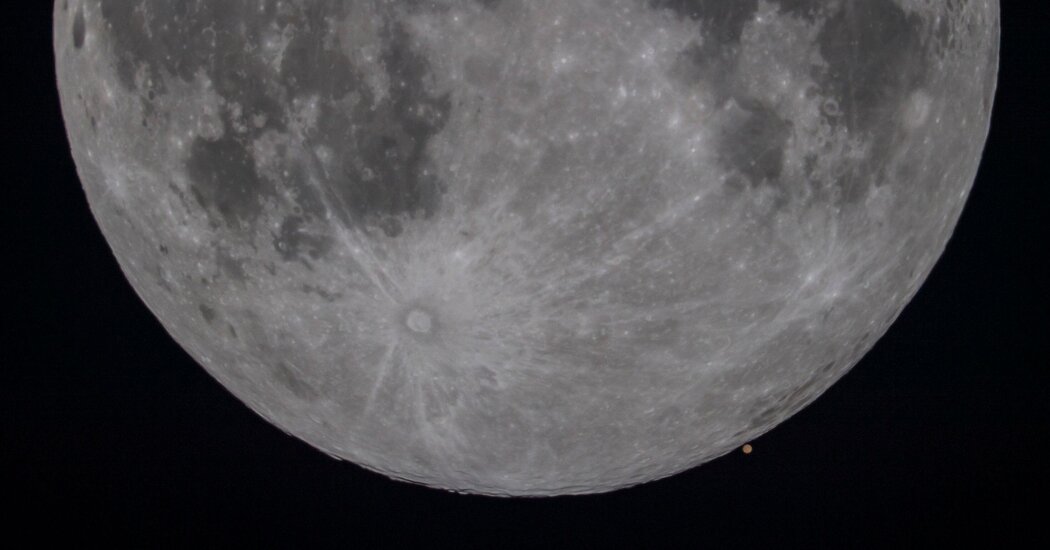On Monday night you may have a chance to witness the moon obscuring the Red Planet at its brightest, as well as a comet’s closest approach to the sun.
The first full moon of the year will glide through the sky on Monday night. For lucky stargazers in some parts of the world, it will also pass in front of the more-brilliantly-red-than-usual Mars in an event known as a lunar occultation.
But that’s not all January’s sky has to offer. A new comet, expected to be the brightest of the year, is nearing its closest approach to the sun on Monday — though spotting it, at least in northern skies, will be tricky.
What is a lunar occultation?
According to NASA, a lunar occultation occurs when the moon passes in front of an object, like a distant planet, that appears much smaller in the sky. An occultation is similar to a solar eclipse — when the moon obscures the sun — but much less grand.
Lunar occultations can happen several times a year and when the moon is in any phase. Earlier this month, a crescent moon that slipped over Saturn was visible for people in Europe, northern Africa and parts of Greenland and Russia.
What’s special about this one?
Mars has been appearing bigger and brighter in the night sky as it nears Earth. It is approaching what is known as opposition, which occurs when Mars is on the opposite side of Earth as the sun. During opposition, Mars is closer to us than usual and its face is fully lit by the sun as viewed from our world, making for spectacular views of the Red Planet.
Mars is in opposition every 26 months. This year, it reaches opposition on Jan. 15 at 9:32 p.m. Eastern time. But the planet has been steadily growing more brilliant since November.
